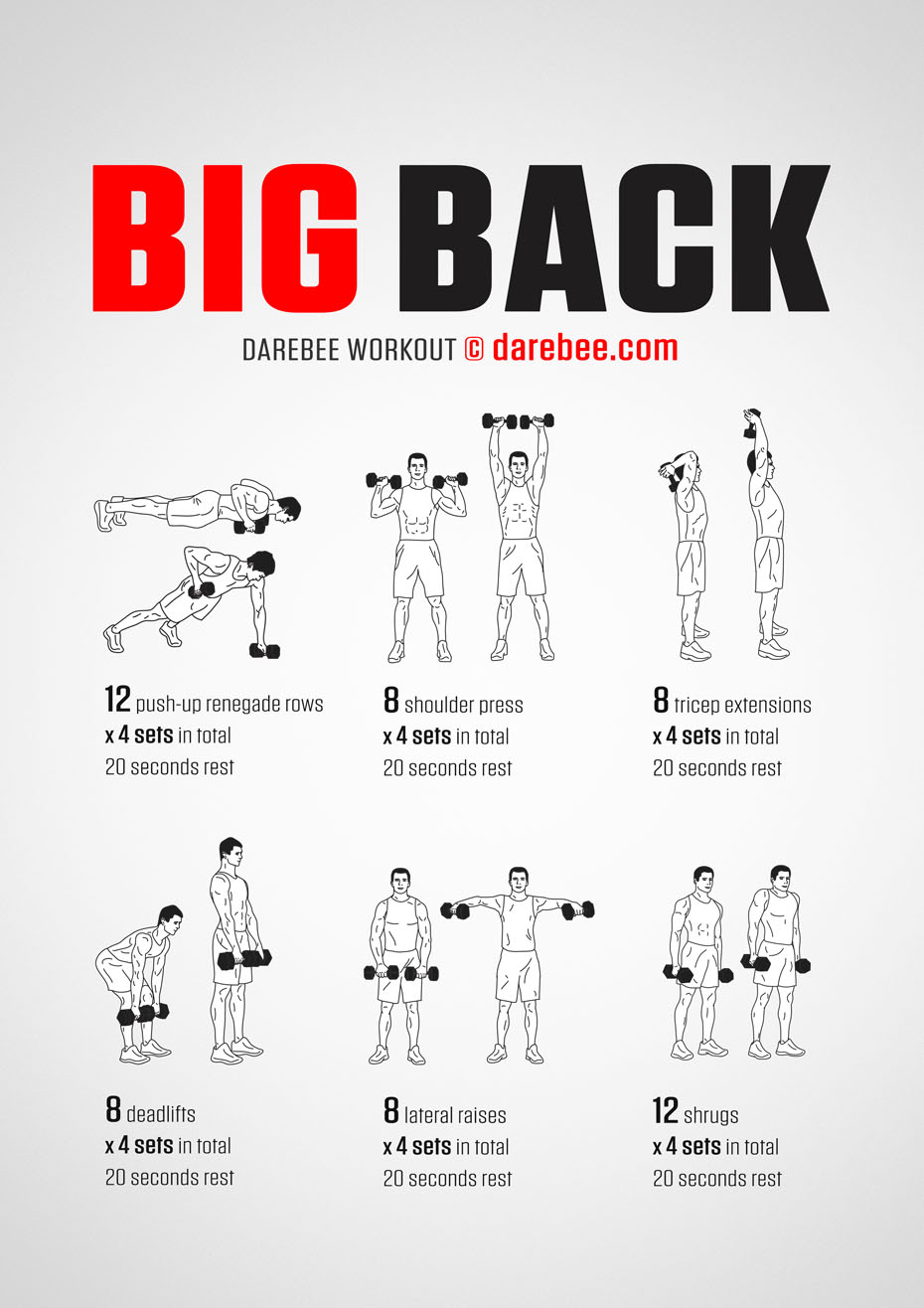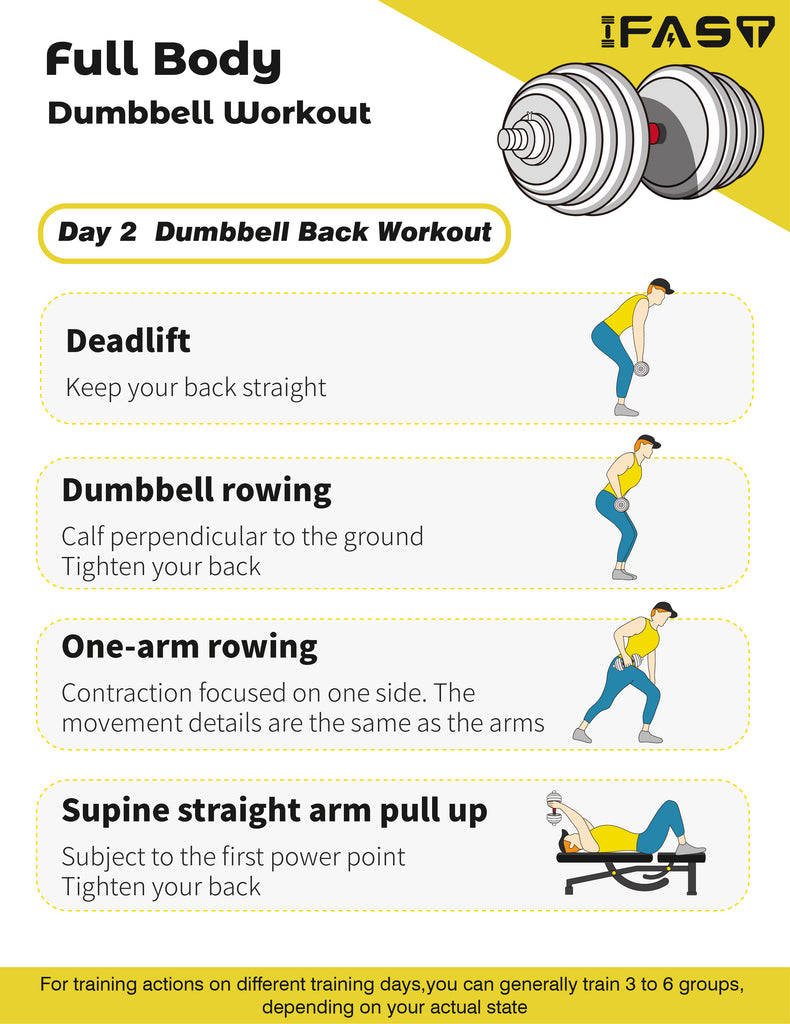Effective Ways to Integrate Kurzhantel RückenTraining for Maximum Results in 2025
In today’s fast-paced world, maintaining a strong and healthy back is more crucial than ever. Rückentraining, or back training, focuses on strengthening the back muscles to improve overall fitness, posture, and mobility. Using Kurzhanteln (dumbbells) in your back workouts not only enhances muscle hypertrophy but also plays a vital role in injury prevention and rehabilitation. This article will explore effective strategies for integrating Kurzhantel RückenTraining into your fitness routine, ensuring maximum results in 2025 and beyond.
Strengthening your Rückenmuskulatur (back muscles) is essential for everyone, whether you’re an athlete or simply looking to improve your fitness. By engaging in targeted Rückenübungen (back exercises), you can enhance your Rückenfitness (back fitness) and reduce the risk of back pain. We’ll cover the benefits of incorporating this form of strength training, variations to try, and essential tips to keep in mind. Get ready to unlock a stronger back through effective training techniques!
Essential Techniques for Effective Kurzhantel RückenTraining
When embarking on your journey into Kurzhantel RückenTraining, it’s essential to start with the right techniques. Understanding how to properly perform Rückenübungen can greatly impact the effectiveness of your workouts.
Understanding the Basics of Rückenübung
To achieve optimal results, you must grasp the fundamentals of back exercises. This includes proper alignment, breathing techniques, and muscle engagement strategies. Ensuring you maintain correct posture will not only enhance your exercise effectiveness but also prevent injuries.
Choosing the Right Kurzhantel for Your Training
Selecting the appropriate dumbbells plays a crucial role in your Rückentraining. It’s important to assess your current fitness level and decide on the weight that will challenge you without compromising form. This could involve starting with lighter weights and gradually increasing as you build strength.
Incorporating Different Bewegungen for Muscle Engagement
Diverse movements in your training routine can enhance muscle definition and strength. Integrating exercises like the Bent-Over Row, Deadlift, and Single-Arm Dumbbell Row allows for targeted engagement of the back muscles while promoting overall stability.
Progression in Your Training Plan
To maximize the effectiveness of your workouts, incorporate progression techniques into your training plan. This might include increasing weights, changing rep counts, or varying rest periods to challenge your body and promote continuous growth.
The Importance of a Warm-Up
Before diving into intense strength training, it’s crucial to perform effective warm-up exercises. Focus on specific mobility drills that activate the muscles of the back and prepare your body for a productive workout. Engaging in a proper warm-up routine can significantly decrease the likelihood of injuries.
Building an Effective Training Routine
Once you’ve established your training techniques, the next step is building a comprehensive Kurzhantel RückenTraining routine. This involves planning exercises that focus not only on strength but also on endurance and flexibility.
Creating a Balanced Workout Schedule
A balanced workout schedule is essential for integrating effective back training. Aim to combine strength sessions with mobility work and rest days to allow your muscles to recover. This balance aids in muscle growth and overall fitness progression.
Utilizing Tools and Resources
Incorporating tools such as fitness apps or training partners can boost motivation and keep your workouts engaging. Stay on track with your goals while benefiting from the support and accountability of a workout buddy.
Variety is Key
To keep your training enjoyable and effective, introduce a variety of Kurzhantel Übungen into your routine. Variation can include different exercise formats such as supersets, circuits, or amrap (as many rounds as possible) workouts, preventing boredom and encouraging muscle adaptation.

Tracking Your Progress
Tracking your progress is crucial in any training regime. Use a Hanteltagebuch (dumbbell journal) to record your weights, repetitions, and how you feel after each workout. This reflective practice can provide insights into what works best for you and where improvements can be made.
Motivational Techniques for Consistent Training
Staying motivated can be challenging. Set specific, measurable goals and celebrate small successes to maintain your enthusiasm. Joining group training sessions or fitness challenges can also provide the motivation necessary to stay committed.
Understanding Recovery and Injury Prevention
Injury prevention and recovery are cornerstone elements of any training program, especially when focusing on the back. Understanding how to care for your body will ensure longevity in your fitness journey.
Recognizing Warning Signs
It’s vital to listen to your body. If you notice signs of undue pain or discomfort during or after workouts, identify these as warning signals. Taking breaks and adapting your training to prioritize recovery can prevent serious injuries.
Integrating Active Recovery Techniques
Active recovery techniques, such as gentle stretching or yoga, promote blood circulation and enhance flexibility while reducing tension in the back muscles. These techniques are essential for alleviating soreness and enhancing overall performance.
Using Physiotherapeutische Übungen in Your Routine
Incorporating physiotherapeutische Übungen (physiotherapeutic exercises) can also be beneficial for strengthening the back. These low-impact movements can aid in rehabilitation and promote long-term health of the Rückenmuskulatur.
Importance of Nutrition for Recovery
Nutritional strategies play a significant role in your recovery process. Focusing on protein intake can support muscle repair, while hydration and a balanced diet aid overall fitness. This encourages effective Rückentraining and improves energy levels.
Practicing Relaxationstechniken
Incorporating relaxation techniques into your fitness routine can minimize stress and enhance performance. Techniques such as meditation or deep breathing can greatly improve your mental fitness, contributing positively to your training results.

Common Mistakes to Avoid in Rückentraining
As you embark on your Kurzhantel RückenTraining, it’s important to be aware of common mistakes that could derail your progress.
Neglecting Form for Weight
A common pitfall is prioritizing weight over form. Lifting too heavy can lead to injuries and reduce the effectiveness of your workout. Focus on maintaining proper technique, even if it means using lighter weights.
Skipping Warm-Up and Cool-Down
Failing to warm up before workouts or cool down afterward can lead to increased injury risks. Always incorporate these essential components into your routine to ensure a safe and effective workout.
Ignoring Pain Signals
If you experience pain during any exercise, don’t push through it. Ignoring your body’s signals is a recipe for injury. It’s best to stop, reassess your technique, and, if necessary, consult a fitness professional.
Inadequate Recovery Time
Overtraining is a significant barrier to achieving optimal results. Ensure you provide your body with ample recovery time to repair and strengthen. Consider incorporating rest days into your routine for comprehensive recovery.
Disregarding Nutrition and Hydration
Your body’s nutritional needs should not be overlooked. A diet lacking in essential nutrients can hinder performance and recovery. Focus on well-balanced meals that nourish your body and support your fitness goals.
Q&A Section
What are the best exercises for Kurzhantel RückenTraining?
While there are many effective exercises, incorporating Bent-Over Rows, Dumbbell Deadlifts, and Renegade Rows can significantly enhance your back strength and overall fitness.
How often should I perform Rückenübungen?
For optimal results, aim to engage in Kurzhantel RückenTraining at least 2-3 times a week, ensuring adequate rest between sessions to promote recovery.
Can Rückentraining help alleviate back pain?
Yes, strengthening the back muscles through targeted exercises can reduce pain by improving posture and stabilizing the spine. However, it’s essential to consult with a healthcare professional if pain persists.
Is it safe to perform Rückentraining at home?
Absolutely! Many Rückenübungen can be performed safely at home. Just be sure to focus on proper technique to minimize injury risks.
What role does progression play in back training?
Progression is crucial in any training plan. Gradually increasing weights, adjusting repetitions, or changing exercises ensures your body continually adapts, leading to strength gains and improved fitness.
